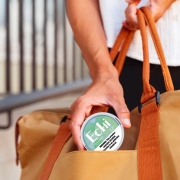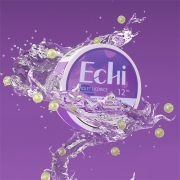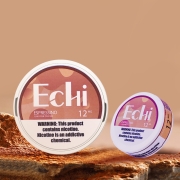Understanding Snuff Cans: A Comprehensive Guide for Businesses and Buyers
Snuff cans may seem like simple containers, but within the smokeless tobacco and nicotine product industries, they play a critical role in product preservation, consumer appeal, and regulatory compliance. For businesses engaged in manufacturing or distributing smokeless tobacco, understanding how snuff cans are designed, made, and marketed is essential for staying competitive in an evolving market.
From material selection to branding potential, this guide unpacks everything businesses need to know about snuff cans. Whether you’re a nicotine manufacturer, wholesale distributor, or brand owner sourcing packaging solutions, this report will help you make informed decisions that align with your product strategy and customer expectations.
What Kind of Article Is This?
Type: Industry Report
Target Audience: B2B buyers, packaging decision-makers, nicotine and smokeless tobacco producers
Tone: Professional, educational, and market-focused
What You’ll Learn in This Guide
-
What Are Snuff Cans and Why They Matter
-
The Anatomy of a Snuff Can
-
How Snuff Cans Are Manufactured
-
Comparing Different Can Materials and Designs
-
How Packaging Choices Impact the Nicotine Market
-
Frequently Asked Questions from Buyers and Distributors
1. What Are Snuff Cans and Why They Matter
Snuff cans are purpose-built containers designed to store smokeless tobacco products like dry snuff and moist snuff (also known as dip). While their core function is product preservation, snuff cans have also become a crucial part of brand presentation and customer experience.
Originally made from basic tins or cardboard, today’s snuff cans have evolved into engineered packaging solutions tailored for freshness, safety, and visual appeal. With growing demand for innovation in nicotine formats, packaging that supports both functionality and differentiation is more important than ever.
2. The Anatomy of a Snuff Can
Understanding the components of a snuff can helps buyers select packaging that meets both regulatory requirements and brand goals. Here’s what to consider:
Material Types:
-
Plastic (Polypropylene or Polyethylene)
Lightweight, durable, and cost-effective. Ideal for mass-market appeal and customizable printing.
→ Widely used by nicotine factories and private-label brands. -
Metal (Aluminum or Tin)
Durable and premium-feeling. Highly recyclable, with strong visual impact.
→ A go-to for premium product lines and upscale retail placements. -
Biodegradable/Compostable Materials
Rising in popularity due to sustainability concerns. Often derived from plant-based polymers.
→ Appeals to eco-conscious consumers, but production costs remain higher.
Lid Designs:
-
Snap-On Lids – Easy to use, inexpensive, widely accepted
-
Threaded Lids – Offer a more premium, tamper-evident solution
-
Child-Resistant Lids – Required in some jurisdictions for safety compliance
Customization Potential:
Packaging isn’t just functional—it’s a storytelling tool. Today’s manufacturers offer custom mold shapes, embossed logos, multi-texture finishes, and a range of printing techniques to elevate shelf presence and brand identity.
3. How Snuff Cans Are Manufactured
While can production varies by material and factory scale, the typical process includes the following stages:
Step 1: Material Processing
Plastic resins or aluminum sheets are prepared, cleaned, and quality-checked before entering the forming process.
Step 2: Forming
-
Plastic cans are created via injection molding.
-
Metal cans are stamped, pressed, and shaped using precision tools.
Step 3: Decoration
This step includes screen printing, pad printing, hot stamping, and other methods for applying logos, brand colors, health warnings, or QR codes.
Step 4: Assembly & Testing
Automated lines seal the lids onto the cans and check for air-tightness, impact resistance, and regulatory labeling.
→ Looking to browse ready-made or custom packaging? Visit Snuff Factory Products.
4. Comparing Different Snuff Can Designs
Here’s a practical breakdown for procurement teams choosing between plastic, metal, and biodegradable options:
| Material | Advantages | Challenges |
|---|---|---|
| Plastic | Cost-effective, customizable, lightweight | Less sustainable, may impact brand perception |
| Metal | Premium feel, recyclable, durable | Heavier, more expensive, may require special shipping |
| Biodegradable | Sustainable, strong eco-brand appeal | Limited availability, higher production costs |
For liquid nicotine wholesalers or nicotine pouch brands looking to comply with market-specific laws, child-safe lids and material certifications (like FDA, ISO, or CE) should be top of mind.
5. How Packaging Influences the Nicotine Market
Different markets call for different packaging strategies:
Urban Convenience Retail:
Customers in city markets tend to favor bold, lightweight packaging. Plastic cans with vibrant graphics and easy-open lids are most effective here.
Premium Markets:
For boutique brands and high-end retailers, custom metal or biodegradable packaging communicates value and exclusivity.
Eco-Conscious Markets:
Sustainable packaging is no longer niche. If you’re targeting Gen Z or Millennial consumers, compostable materials and minimalist eco-branding can significantly boost engagement.
→ Need help sourcing packaging that fits your audience? Contact Snuff Factory.
6. FAQs: What Buyers Should Know
Q1: How important is packaging sustainability?
Very. Brands that align with environmental values not only gain consumer trust but may also qualify for retail partnerships that prioritize green packaging.
Q2: What are the best methods for branding snuff cans?
Pad printing, laser engraving, and UV digital printing are widely used. Embossing and texture finishes can further differentiate your product.
Q3: What should buyers ask before placing a packaging order?
-
Minimum order quantity
-
Lead time and production capacity
-
Regulatory compliance (e.g., FDA, EU TPD)
-
Customization and private labeling support
-
Logistics and after-sales service
Final Thoughts
Snuff cans are more than just containers—they’re a strategic tool for product protection, branding, and compliance. For businesses in the smokeless tobacco or nicotine patch sectors, investing in the right can design directly affects product appeal and customer satisfaction.
If you’re looking for a reliable partner for packaging innovation, look no further than Snuff Factory. With extensive experience in nicotine product packaging, they offer scalable solutions for brands large and small.
Want to position your brand with packaging that delivers both form and function?
Explore the full product line or request a custom quote at Snuff Factory.












Leave a Reply
Want to join the discussion?Feel free to contribute!